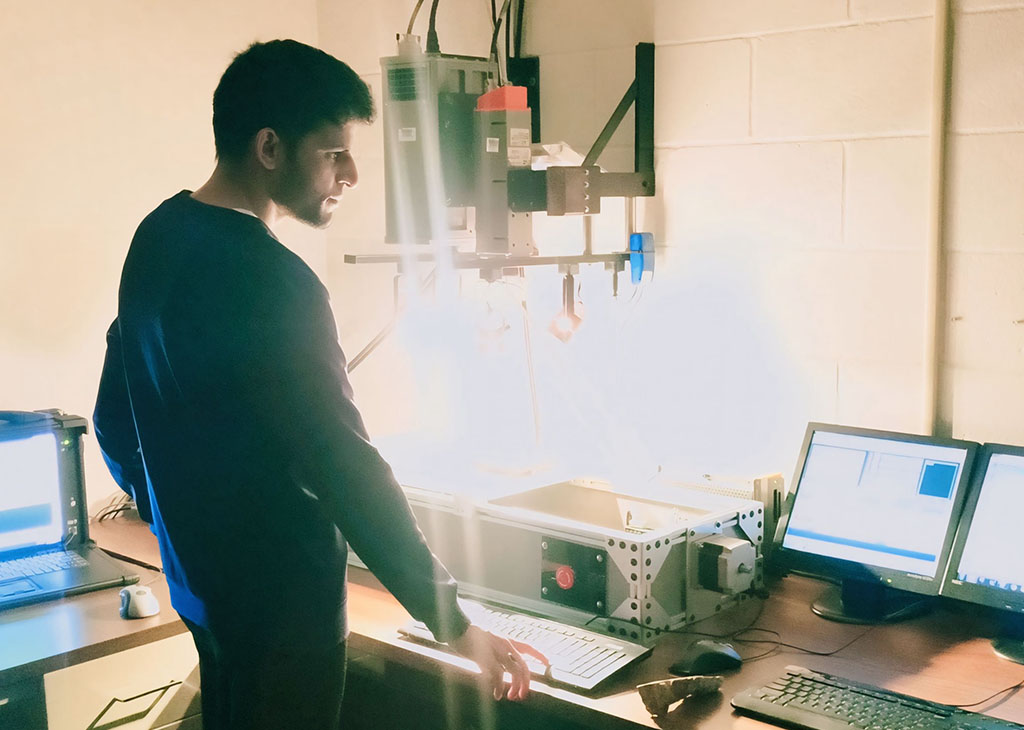Technique Minimizes Damage to Sample and Reduces Preparation Time
University of Houston Department of Earth & Atmospheric Sciences faculty and student researchers have developed a non-contact method to remotely characterize the mineral composition of a stalagmite. The findings published in Sedimentary Geology.

The paper, led by geology Ph.D. candidate Ali Raza, details the new technique used to categorize a stalagmite from Madagascar. Stalagmites are a variety of cave deposits, collectively known as speleothem, that grow upward from the cave floor.
Raza worked under the supervision of Ny Riavo Voarintsoa, an assistant professor of sedimentary geology who leads the EAS Paleoclimate Geochemistry Research Group, and in collaboration with the Geosciences Remote Sensing Group, including Professor Shuhab Khan and geology Ph.D. candidate Muhammad Qasim. All four are authors on the paper.
The team employed lab-based hyperspectral imaging techniques, a method that collects spectral signatures of the materials across a wide wavelength of electromagnetic spectrum between 400 and 2500 nanometers.
“This method allowed us to identify the carbonate mineralogy and organic content present in these deposits without physically destroying the sample,” Raza said.
To ensure the accuracy and reliability of the method, the researchers checked the mineralogy using traditional techniques that include X-ray diffraction and petrographic microscopy. Both methods require powdering and slabbing of stalagmites. Minerals identified by the hyperspectral imaging methods were confirmed by these traditional techniques.
The team also developed a machine learning algorithm to automate mineral identification by mapping regions with similar mineralogy.
“The methodological approach we designed for our study will be extended to analyze stalagmites from different caves and regions across the world,” said Voarintsoa.
This new non-contact method is anticipated to advance the field of speleothem sciences by minimizing sample loss from slab preparation or powder extractions and by reducing the sample preparation time for mineral identification. It offers new insights into characterizing important climatic archives without risking alteration or destruction.
“The non-contact technique also opens door for similar applications in other areas of geological and environmental research,” said Khan.